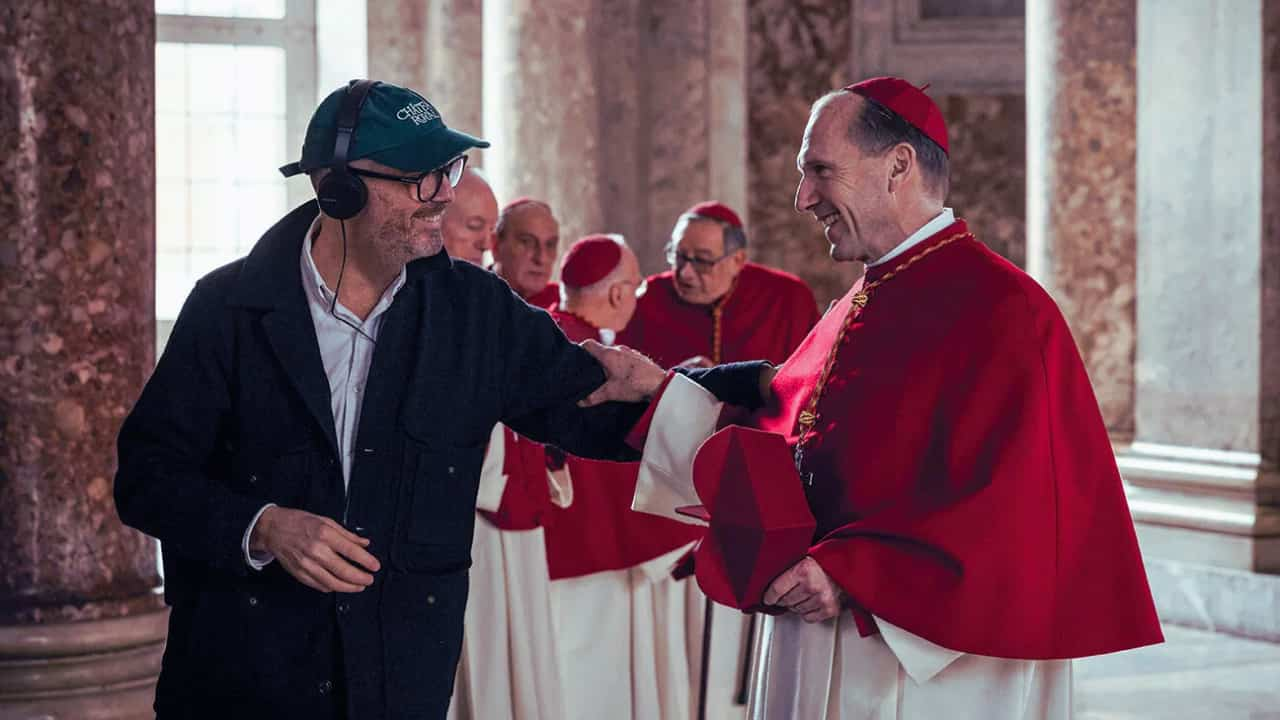In an unexpected turn of events, Edward Berger’s “Conclave” has transcended its seemingly niche appeal to become a cultural phenomenon that bridges traditional cinema and modern social media culture. What started as a serious drama about papal succession, featuring veteran actors Ralph Fiennes, Stanley Tucci, and John Lithgow, has evolved into something far more intriguing.
From Sacred Halls To Viral Memes
The film’s premise is straightforward: following the death of a pope, Cardinal Thomas Lawrence (played by Fiennes) must oversee the election of a new pontiff. However, what unfolds is far from simple. The movie has sparked an enthusiastic online following, with viewers drawing surprising parallels to pop culture favorites. “Just Mean Girls for popes,” as one fan aptly described it, captures the essence of how younger audiences have embraced this ecclesiastical drama.
Social media platforms are buzzing with creative interpretations. Users compare the Vatican politics to “The Real Housewives” franchise, while others craft clever memes about cardinals “vaping” and navigating religious doubts. The term “popesonas” has even entered the online lexicon, showing how deeply the film has penetrated internet culture.
Beyond Entertainment: A Mirror To Modern Faith
Matthew Bowman, a Latter-day Saint scholar, offers a deeper perspective on the film’s significance. He argues that “Conclave” brilliantly portrays how faith operates in our secular age. The movie shows divine intervention working through human actions rather than obvious miracles, reflecting how many modern believers experience faith.
The film’s genius lies in its ability to balance multiple aspects:
- Traditional religious ceremony
- Modern political intrigue
- Personal struggles with faith
- Contemporary social commentary
Controversial Takes And Critical Reception
Some critics, including traditionalist Catholics, have expressed concerns about the film’s portrayal of church politics. The movie presents a clash between conservative and progressive factions within the Church, with Cardinal Tedesco representing traditional values and Cardinal Lawrence embodying a more progressive approach.
The film’s treatment of Catholic theology has sparked debate. While some praise its modern take on ancient traditions, others argue it oversimplifies complex religious doctrines. The movie’s climactic revelation about the new Pope Innocent adds another layer of controversy and discussion about gender and religious authority.
Cultural Impact And Relevance
“Conclave” has achieved something rare: it has made ecclesiastical politics accessible and engaging to modern audiences while maintaining its artistic integrity. The film’s success in generating online discourse proves that serious religious themes can resonate with younger viewers when presented through a contemporary lens.
The visual elements deserve special mention. From the red silk of cardinal robes to the white smoke of papal election, the film’s attention to Catholic symbolism creates a rich visual tapestry that appeals to audiences regardless of their religious background.
The Power Of Modern Storytelling
What makes “Conclave” particularly significant is its ability to transform potentially dry subject matter into compelling entertainment that speaks to current social issues. The film demonstrates how traditional institutions and modern sensibilities can coexist in contemporary storytelling.
By embracing both serious themes and lighter moments, “Conclave” has created a unique space in popular culture where religious tradition meets modern entertainment. It’s a testament to how complex subjects can find new life and relevance through thoughtful adaptation and unexpected audience engagement.
Whether viewed as serious drama or social media fodder, “Conclave” has successfully bridged multiple generations and viewpoints, creating a unique cultural moment that few religious-themed films have achieved. It stands as proof that even the most traditional subjects can find new life in our digital age.
Table of Contents
